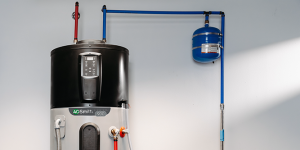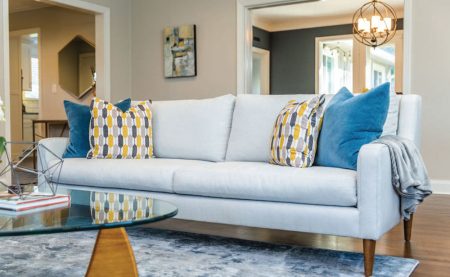There are different ways to approach funding your home repairs or upgrades, including a personal loan or a home improvement loan. In many cases, a home improvement loan is a type of personal loan. However, home-related costs can also be covered by other types of loans.
Key Takeaways
- A personal loan is an unsecured loan that can be used for various purposes, including home improvement.
- Different types of home improvement loans are available, including home equity loans, lines of credit, and cash-out refinances.
- Compare different rates and terms to determine which type of loan might work best for your budget and needs.
Personal Loan vs. Home Improvement Loan: An Overview
A personal loan is usually a type of unsecured loan, meaning that you don’t need to provide collateral as insurance against missed payments. Personal loans can be used for a variety of purposes, including home improvement. A home improvement loan is often a personal loan taken out with the specific purpose of funding home repairs or upgrades. However, a home improvement loan can also be other types of loans.
Personal Loan
Most personal loans are unsecured, although some lenders might require collateral of some sort if you need a large amount of money or if you have less-than-stellar credit. Personal loans generally offer fast funding and often have fixed interest rates. If you have a relatively small home improvement project, a personal loan might make sense.
Pros and Cons of Personal Loans
-
No collateral needed: In most cases, you don’t need collateral to secure a personal loan.
-
Fast funding: You can usually receive same-day approval for a personal loan, along with funds deposited as early as the next business day.
-
Fixed interest rate: Many personal loans have a fixed rate for the term of the loan, making payments predictable.
-
Higher interest rates: Sometimes an unsecured personal loan comes with a higher interest rate than a secured loan.
-
Higher credit score: You might need to have good credit to qualify for the best terms.
-
High fees and penalties: Some personal loans come with high origination fees and might have penalties that add to the cost of the loan.
Home Improvement Loan
In some cases, a home improvement loan is simply a type of personal loan with the purpose of paying for home repairs or improvements. However, a home improvement loan can also be secured by the equity in your home. If you use your home as collateral, you might get a lower interest rate, but you’re also taking the risk that your home could be foreclosed on if you can’t make repayments.
If you need a large amount of money to complete a home renovation project, it might make more sense to get a secured home improvement loan instead of relying on an unsecured personal loan.
Pros and Cons of Home Improvement Loans
-
Lower interest rates: If you choose a secured home improvement loan, you might be able to get a lower rate.
-
Higher loan amounts: Secured loans often come with higher loan amounts, which can allow you to tackle bigger projects.
-
Longer loan term: Often a secured home improvement loan comes with a longer repayment term, potentially lowering your payments.
-
Risk of losing your home: If you secure a home improvement loan with home equity, you could lose your home if you default on your loan.
-
Longer funding period: When getting a secured home improvement loan, you usually need an appraisal, and the complexity of a home equity loan means it could be weeks before you get funding.
-
Closing costs: A secured home improvement loan usually comes with closing costs similar to what you’d see with a mortgage, increasing the overall cost of the loan.
Personal Loan vs. Home Improvement Loan: Key Differences
While a personal loan can be used for home improvement, and a home improvement loan can be unsecured like most personal loans, there are still some key differences between the two, especially if you decide to get a secured loan for home-related repairs and upgrades.
The biggest difference is that it’s possible for a home improvement loan to be secured with equity. If you have enough equity in your home, you can use that to get a loan or line of credit, which you can use for improvements.
By securing a home improvement loan with equity, you might be eligible for a tax deduction—something that isn’t available when you get a personal loan for the same purpose. Additionally, a home equity line of credit (HELOC) might come with a variable rate, making your payments a little less predictable than what you can expect with a fixed-rate personal loan.
Home Improvement Loan vs. Home Equity Loan
When you take out a home improvement personal loan, you’re essentially getting an unsecured personal loan you intend to use to make changes or repairs to your living space. You don’t have to worry about having your home repossessed if you fail to make repayments.
A home equity loan, on the other hand, is debt secured by the ownership you’ve built up in your house. You can usually get a larger amount of funding, depending on how much equity you have. This can be helpful if you plan to make major renovations. However, the rate might be variable, especially if your home equity loan is a line of credit. Additionally, if you can’t make payments later, you could lose your home.
Alternatives to Personal Loans for Home Improvement
While an unsecured personal loan can be used for home improvements, it’s not always the best option. Here are some of the secured alternatives you can potentially consider:
- Home equity loan (HEL): Normally, this type of loan provides a lump sum based on how much equity is available in your home.
- Home equity line of credit (HELOC): This is a type of home equity loan that draws on a revolving line of credit based on your equity. It’s a good choice when you’re not sure how much you’ll need for home improvements.
- Cash-out refinance: Another possibility is to refinance your mortgage for more than you owe. This is a way to get a new mortgage and take out cash based on your equity. This can be another way to get a large lump sum for home improvements.
Finding the Best Loan for Your Needs
When choosing between a personal loan and a home improvement loan, it’s important to understand your needs and your budget. Start by determining how much money you’ll require to accomplish your goals.
If you need a relatively small amount, and you need the money quickly, it might make sense to get a personal loan for home improvements, even with a higher interest rate. On the other hand, if you need a larger amount, a home improvement loan secured with your equity might be a better amount.
Is It Easier to Get a Home Improvement Loan or Home Equity Loan?
Depending on the situation, it might be easier to get an unsecured personal loan for home improvement, especially if you need the money quickly. However, if you have fair credit, it might be easier to get a secured loan, like a home equity loan, even though it might take longer to get the money.
Can Personal Loans Be Used for Construction?
Personal loans have a variety of potential uses, including construction. However, depending on the amount you need, it might be difficult to get an unsecured personal loan for a high amount.
Do Personal Loans Look Bad to Lenders?
Having personal loan debt doesn’t necessarily look bad to lenders. Depending on the situation, if you have a personal loan and pay on time and in full, lenders are likely to see that as a positive.
The Bottom Line
Often, making home repairs or improvements can be expensive, requiring more money than you have on hand. A loan can help you cover those costs. A home improvement loan can help you accomplish your goals, either with an unsecured personal loan or a loan secured with your home’s equity. Carefully weigh the pros and cons, including how much money you need and how quickly you need the funds, as you determine which type of loan to get.
Read the full article here














